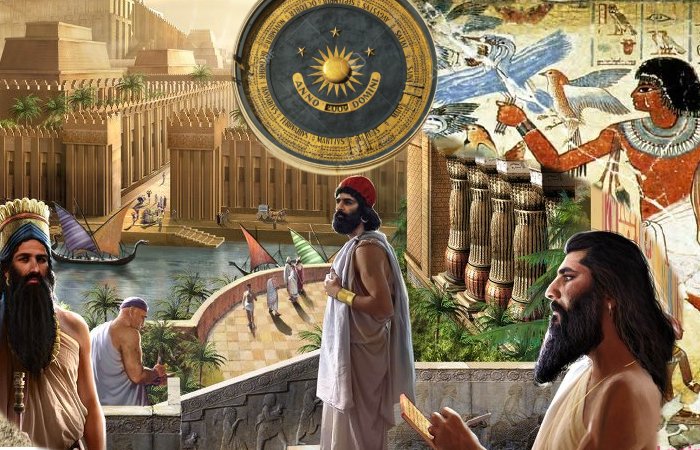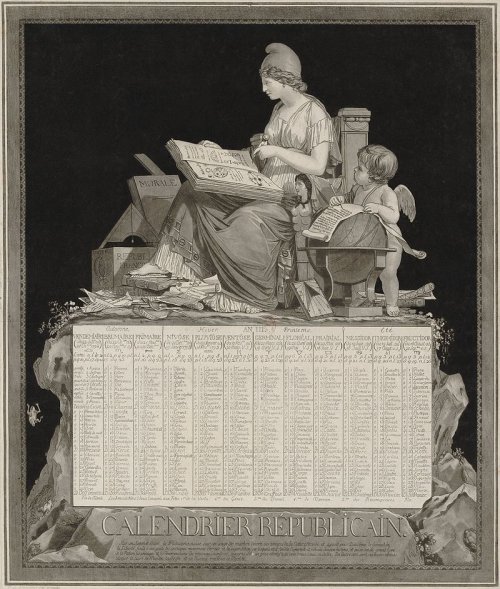In Ancient Times We Had Weeks Of Different Lengths
AncientPages.com - Of course, today we are used to a "week" as a 7-day period, but over the course of history the weeks have been as diverse as the people who used them.
As you might already know, days are related to the spin of the Earth, months to the phases of our Moon and years to the Earth's orbit around the Sun.
To determine and agree on the number of days in a week seems to have been a problem not only for our ancestors, but also for more modern civilizations. Most societies had some form of a week and the number of days varied from three up to as many as 16 days.
The ancient Egyptians and Greeks used to split their month into three ten-day weeks. The Inca used eight-day weeks. The Maya calendar uses a 13 and a 20-day week. The ancient Assyrians on the other hand had a six-day week.
Some West African tribes lived according to a four-day week.
The seven-day week which is now standard across the world seems to have originated with the Babylonians about 4,000 years ago. The days were named after the five planets known to the ancients at the time and they included the Sun and the Moon, which they regarded as planets as well. The seven day week custom was later adopted by the Romans.
Constantine the Great (c. 272 AD - 22 May 337 AD)
It was Emperor Constantine in 321 AD who established the seven day week in the Roman Calendar.
Our seven day week has been used for millennia by the Christian, Jewish, Islamic, Persian and Chinese calendars.
The day of rest is of course different depending on whether you are Jew, Christian or Muslim. For the Jews, the Sabbath (Saturday) is the day of rest and worship. On this day God rested after creating the world. Most Christians made Sunday their day of rest and worship, because Jesus rose from the dead on a Sunday. Muslims use Friday as their day of rest and worship. The Qur'an calls Friday a holy day, the "king of days."
Lithuanians used week of nine days before adopting Christianity.
See also:
Mesoamerican Long Count Calendar Begins – On August 11, 3114 B.C
Vikings And The Runic Calendar
Astonishing Lunar And Solar Calendars Created 30,000 B.C.
In more modern times, several countries tried to change the habit and enforce a "different" week.
The French Revolution resulted among many things in a strong wish for reforms. People wanted to eliminate the dominance and influence the Catholic Church had in pre-revolutionary France.
On 20 September, 1793, a mathematician named Gilbert Romme presented a proposal for a completely new calendar.
The goal was to get rid of the Gregorian calendar with its saints' days and religious holidays.
The year would no longer begin on January 1, but at the autumn equinox and anniversary of the proclamation of the Republic that occurred on September 21. Each month was thirty days long, divided into three weeks of ten days each.
French Republican Calendar of 1794, drawn by Philibert-Louis Debucourt
The result became known as the French Revolutionary Calendar and it was implemented for 13 years before it was abolished by Napoleon.
Another country that tried to replace the Gregorian calendar was the Soviet Union. In 1929, they introduced the Eternal Calendar. The new calendar contained 12 months of 30 days each, with six weeks of five days each in every month.
The Eternal calendar was intended to be favorable for Soviet workers. Instead of working 30 days and getting five days off out of every 35, they now worked only 28 days and got seven days off.
However, there was no fixed day of rest. On September 1, 1931 this was replaced by a six-day week with a fixed day of rest.
The Eternal Calendar was not popular among religious people and workers who wished to have Sunday as the rest day.
People simply ignored the six-day weeks and continued living by the old rules. Therefore, in 1940 the Soviet Union returned to the Gregorian calendar.
Today, we all use a seven-day week, but maybe one day in the future there will be a new attempt to create yet another different calendar…
Copyright © AncientPages.com All rights reserved. This material may not be published, broadcast, rewritten or redistributed in whole or part without the express written permission of AncientPages.com
More From Ancient Pages
-
 12 Alchemy Symbols Explained
Ancient Symbols | Aug 20, 2018
12 Alchemy Symbols Explained
Ancient Symbols | Aug 20, 2018 -
 On This Day In History: Captain James Cook Spotted The East Coast Of Australia – On Apr 19, 1770
News | Apr 19, 2016
On This Day In History: Captain James Cook Spotted The East Coast Of Australia – On Apr 19, 1770
News | Apr 19, 2016 -
 Face Of Neanderthal Who Lived 56,000 Years Ago Reconstructed
Archaeology | Nov 10, 2023
Face Of Neanderthal Who Lived 56,000 Years Ago Reconstructed
Archaeology | Nov 10, 2023 -
 Ancient Mystery Of Peculiar Nail With Six Faces And Six Eyes – Unusual Discovery In Borgholm Castle, Sweden
Artifacts | Jan 8, 2017
Ancient Mystery Of Peculiar Nail With Six Faces And Six Eyes – Unusual Discovery In Borgholm Castle, Sweden
Artifacts | Jan 8, 2017 -
 New Species Of Stegosaur Is Oldest Discovered In Asia, And Possibly The World
Fossils | Mar 7, 2022
New Species Of Stegosaur Is Oldest Discovered In Asia, And Possibly The World
Fossils | Mar 7, 2022 -
 Mystery Of The Marble Lions On The Sacred Island Of Delos Solved?
Archaeology | Oct 12, 2021
Mystery Of The Marble Lions On The Sacred Island Of Delos Solved?
Archaeology | Oct 12, 2021 -
 Mysterious Balochistan Sphinx Has An Ancient Story To Tell – But Is An Advanced Ancient Civilization Or Mother Nature Hiding Behind The Story?
Featured Stories | Feb 3, 2018
Mysterious Balochistan Sphinx Has An Ancient Story To Tell – But Is An Advanced Ancient Civilization Or Mother Nature Hiding Behind The Story?
Featured Stories | Feb 3, 2018 -
 Early Humans Used Fire To Make Stone Tool – New Study
Archaeology | Oct 16, 2020
Early Humans Used Fire To Make Stone Tool – New Study
Archaeology | Oct 16, 2020 -
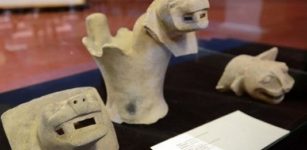 Lake Titicaca Reveals More Ancient Underwater Secrets
Archaeology | Oct 11, 2013
Lake Titicaca Reveals More Ancient Underwater Secrets
Archaeology | Oct 11, 2013 -
 Fossilized Million-Year-Old Human Skull Of Yunxian Man Excavated In China
Archaeology | Jan 10, 2023
Fossilized Million-Year-Old Human Skull Of Yunxian Man Excavated In China
Archaeology | Jan 10, 2023 -
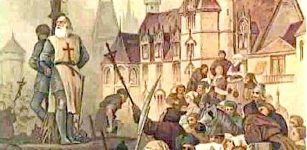 On This Day In History: Knights Templars’ Jacques de Molay Burned At The Stake – On Mar 18, 1314
News | Mar 18, 2017
On This Day In History: Knights Templars’ Jacques de Molay Burned At The Stake – On Mar 18, 1314
News | Mar 18, 2017 -
 Tarascan Indians: Intriguing Pre-Columbian Civilization Of Artists, Warriors And Skilled Metallurgists
Civilizations | Sep 9, 2021
Tarascan Indians: Intriguing Pre-Columbian Civilization Of Artists, Warriors And Skilled Metallurgists
Civilizations | Sep 9, 2021 -
 Rare Find Provides New Insight Into Etruscan Life Under Rome
Archaeology | Sep 3, 2022
Rare Find Provides New Insight Into Etruscan Life Under Rome
Archaeology | Sep 3, 2022 -
 Extraordinary Kite-Shaped Pictish Ring Found At Moray Fort In Scotland
Archaeology | Sep 5, 2024
Extraordinary Kite-Shaped Pictish Ring Found At Moray Fort In Scotland
Archaeology | Sep 5, 2024 -
 12,000-Year-Old Burial Of Female Shaman Unearthed In Turkey
Archaeology | Jul 31, 2024
12,000-Year-Old Burial Of Female Shaman Unearthed In Turkey
Archaeology | Jul 31, 2024 -
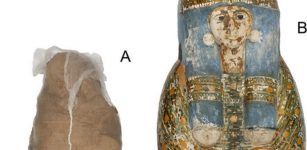 New Study Reveals Rare Mortuary Treatment Of Egyptian Mummy
Archaeology | Feb 8, 2021
New Study Reveals Rare Mortuary Treatment Of Egyptian Mummy
Archaeology | Feb 8, 2021 -
 The Aztec Sun Stone And Medusa Reveal An Intriguing Connection – A Different Gorgon And Strange Location – Part 2
Civilizations | Aug 1, 2018
The Aztec Sun Stone And Medusa Reveal An Intriguing Connection – A Different Gorgon And Strange Location – Part 2
Civilizations | Aug 1, 2018 -
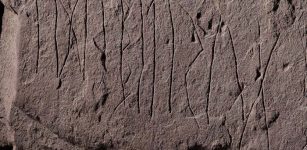 Mysterious Svingerud Stone – World’s Oldest Rune Stone With Enigmatic Inscriptions Investigated By Experts – What Does It Say?
Archaeology | Jan 17, 2023
Mysterious Svingerud Stone – World’s Oldest Rune Stone With Enigmatic Inscriptions Investigated By Experts – What Does It Say?
Archaeology | Jan 17, 2023 -
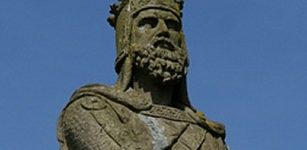 Robert The Bruce: Mighty King Of Scots And Great Scottish Hero
Featured Stories | Oct 13, 2016
Robert The Bruce: Mighty King Of Scots And Great Scottish Hero
Featured Stories | Oct 13, 2016 -
 On This Day In History: Naval Battle Of Porto Bello Begins – On Nov 20, 1739
Featured Stories | Nov 20, 2016
On This Day In History: Naval Battle Of Porto Bello Begins – On Nov 20, 1739
Featured Stories | Nov 20, 2016

